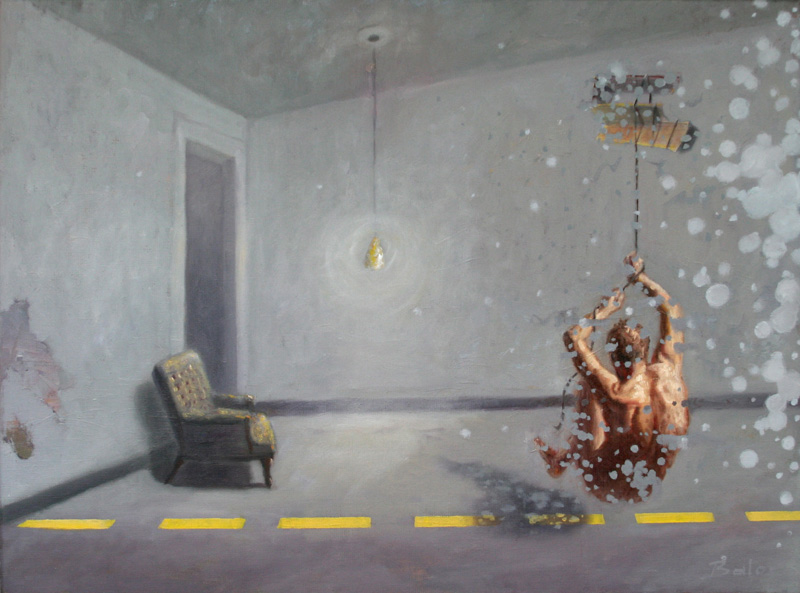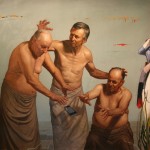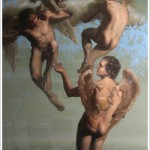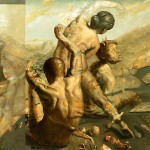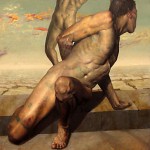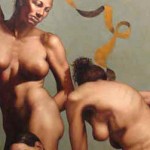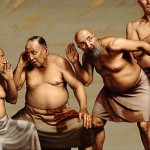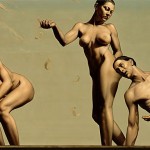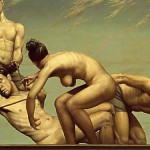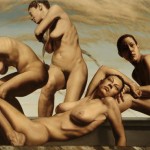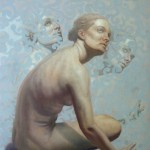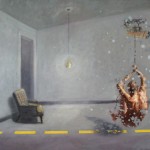Figurative paintings & art, sometimes written as figurativism, describes artwork—particularly paintings and sculptures—that is clearly derived from real object sources, and are therefore by definition representational. “Figurative art” is often defined in contrast to abstract art:
Since the arrival of abstract art the term figurative has been used to refer to any form of modern art that retains strong references to the real world.[1]
Painting and sculpture can therefore be divided into the categories of figurative, representational and abstract, although, strictly speaking, abstract art is derived (or abstracted) from a figurative or other natural source. However, “abstract” is sometimes used as a synonym for non-representational art and non-objective art, i.e. art which has no derivation from figures or objects.
Figurative paintings & art is not synonymous with “art that represents the human figure,” although human and animal figures are frequent subjects.
The formal elements, those aesthetic effects created by design, upon which figurative art is dependent, include line, shape, color, light and dark, mass, volume, texture, and perspective,[2] although it should be pointed out that these elements of design could also play a role in creating other types of imagery — for instance abstract, or non-representational or non-objective two-dimensional artwork. The difference is that in figurative art these elements are deployed to create an impression or illusion of form and space, and, usually, to create emphasis in the narrative portrayed.
